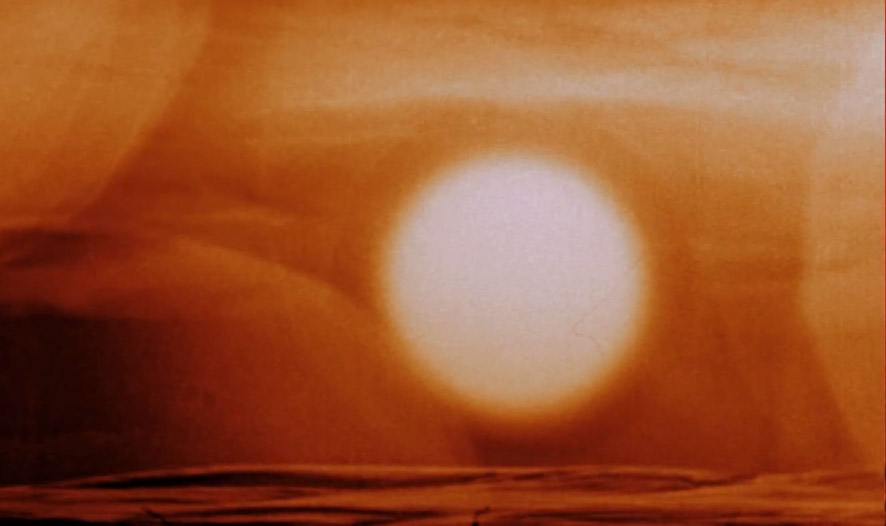Although the formation of a mushroom cloud has become the most recognizable feature of a nuclear explosion (see previous section), it is actually not the generation of smoke that happens first, but the release and propagation of a wave of blinding light and intense heat energy. The production of energy from the process of fission or fusion, which are the two main types of nuclear devices used in arsenals today, is emitted in the form of high-velocity kinetic energy, intense heat, and an incredible output of light released from the fireball and thermal pulse emanating out from the point of detonation. The electromagnetic energy is emitted throughout the entire spectrum and includes infrared wavelengths, microwaves, visible light, ultraviolet light, x-rays, and high-frequency gamma rays. The gamma rays directly result from the splitting of the atoms, while the other wavelengths of light are a result of the intense heat and energy which excites molecules and atoms in the surrounding area. The fireball and thermal pulse emitted by a thermonuclear explosion represents the most concentrated burst of energy that has ever occurred on planet Earth. In fact, the magnitude of light emission can be many times greater than the light emitted from a corresponding area on the sun’s surface. Thus, anyone looking directly at the initial blast would be instantly blinded by the intense flash as the light burns out their retinas at the back of their eyes.
The thermal pulse resulting from a 1 megaton bomb (“mega” means millions; in this case the equivalent of one million tons of exploding TNT—or 2 billion pounds of TNT) would be so large that it would vaporize anything in the immediate vicinity of the fireball and be capable of causing second and third degree burns at a radius of at least 9-1/2 miles away from ground zero. Thus, one average-sized thermonuclear bomb would cause a circular region of thermal destruction of over 283 square miles—and that corresponds only to the region affected by the fireball and thermal pulse from such a blast!
Remarkably, a nuclear device of this size is now probably average for the nuclear arsenals of our day. To get an idea of what this explosive yield means in terms of blast force, the Hiroshima bomb that devastated an entire city in an instant at the end of World War II only produced a yield of about 20 kilotons (KT; “kilo” refers to thousands of tons of TNT; thus 40 million pounds of TNT) or one-fiftieth of the yield of a 1 MT explosion. The arsenals of the nuclear powers today likely contain hundreds or even thousands of warheads that exceed the 1 MT level, especially in the weapons of the U.S., Russia, Europe, and China, which are the principle nuclear powers.
Where does the enormous energy of a nuclear explosion come from? Amazingly, it comes from the loss of a just small amount of mass within the atoms and subatomic particles at the warhead core when they are either split into lighter elements (fission process) or they are fused together into heavier elements (fusion process). Both of these events cause the transformation of a small amount of mass in each fission or fusion reaction into pure energy, which radiates out of the core with incredible ferocity…[read entire article]
Subscribe to End Times Truth
Subscribe to get notified when new articles or posts are uploaded. Always keep updated on the latest news in End Times prophecy!



